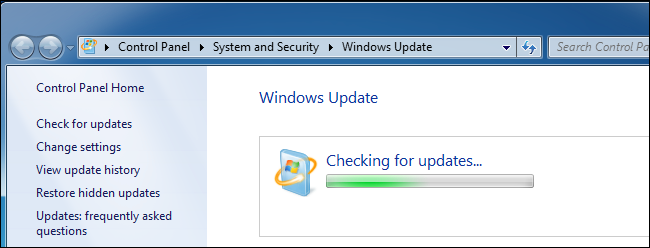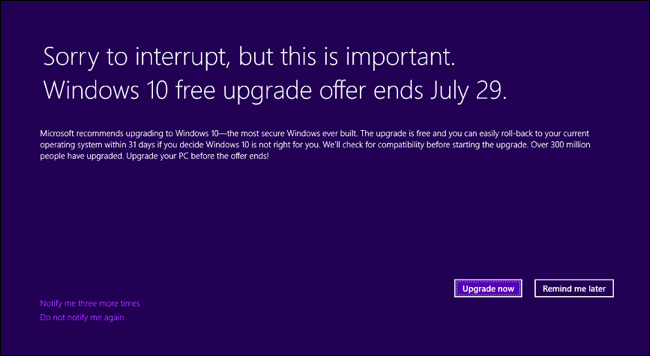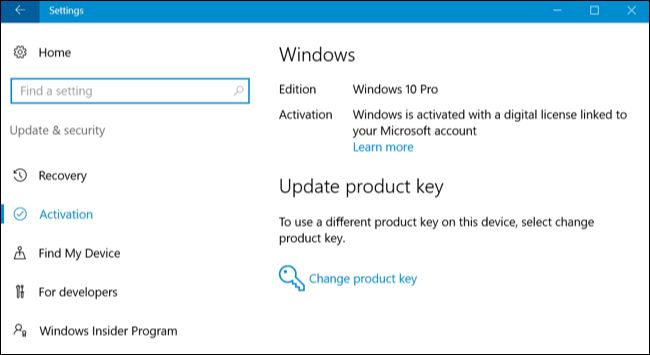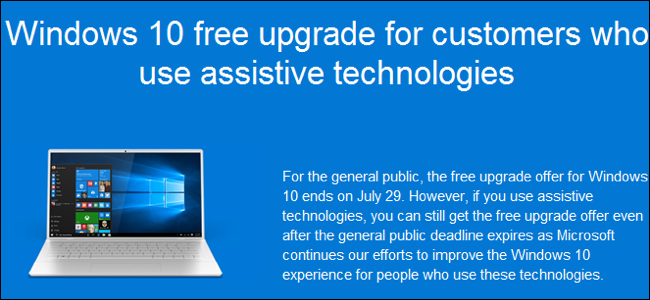Quick Links
The free Windows 10 upgrade offer is finally over, and Microsoft will stop harassing Windows 7 and 8.1 users with misleading upgrade popups. But Windows 7 and 8.1 aren't done for. They're both solid operating systems that Microsoft will be officially supporting for years to come.
If you did upgrade to Windows 10, you still won't have to pay anything. You can continue to use Windows 10 for free, and even reinstall it on the same hardware. In fact, even if you missed the upgrade boat, there's still a way to upgrade to Windows 10 for free.
Windows 7 and 8.1 Will Get Security Updates Until 2020 and 2023
Let's get something out of the way: This isn't like the Windows XP deadline, where Microsoft was going to stop supporting Windows XP. Both Windows 7 and Windows 8.1 are still supported by Microsoft with security updates, and will be for years to come.
Windows 7 will be supported with security updates until January 14, 2020, while Windows 8.1 will receive security updates until January 10, 2023. You can always find these support dates on Microsoft's Windows lifecycle fact sheet web page.
So, if you're still using Windows 7 or 8.1 on your PC, that's fine. They're still officially supported, and Windows 7 in particular is widely used in businesses. Leave Windows Update enabled and you'll keep getting security updates until 2020 or 2023.
Microsoft Is Removing GWX and Those Pesky Upgrade Offers
That pushy "Get Windows 10" upgrade offer, also known as "GWX", is finally going away. The upgrade prompts should already be gone. If you do see a leftover upgrade offer popup in the next few days, clicking through it won't actually do anything because the free upgrade is no longer available.
Microsoft has announced that it will roll out upgrades to Windows 7 and 8.1 that remove the GWX program responsible for producing these upgrade prompts. Keep installing updates from Windows Update and the GWX tool will be removed from your computer.
Windows Update will also lose the upgrade offer. Windows 10 will no longer be a "recommended update" in Windows Update on Windows 7 and 8.1, so you can enable automatic updates and safely install everything from Windows Update.
Software Developers Won't Abandon Windows 7 Any Time Soon
Despite Microsoft's aggressive upgrade tactics, a large percentage of PCs--especially business PCs--are still using Windows 7. Windows 7 is in use on around 49% of PCs, while Windows 10 only has about 19%. Windows 7 isn't going away anytime soon. Many software developers will continue supporting Windows 7 and 8.1, so don't worry too much about incompatibility.
There are some exceptions, of course. Microsoft itself wants to encourage people to upgrade, so many new Microsoft programs only work on Windows 10. For example, you can only stream games from an Xbox One to your PC using the Xbox app, which is only available for Windows 10. Microsoft is porting many Xbox One games to Windows 10, but they're only available through the Windows Store, and only for Windows 10. But even Microsoft isn't limiting important productivity applications like Microsoft Office to Windows 10 users. The latest versions Microsoft Office continue to support Windows 7.
Developers could create "Universal Windows Platform" apps for the Windows Store and these applications would only run on Windows 10, but developers aren't rushing to do this. Even most Windows 10 users still primarily rely on desktop applications.
In addition, gamers should note that Windows 10 does exclusively have DirectX 12, while Windows 7 and 8.1 just have DirectX 11. If a game or game engine uses DirectX 12, you'll need Windows 10 to play it. But many games will offer DirectX 12 as one of several options, just as many games offered DirectX 9 support for Windows XP users alongside DirectX 11 support for Windows 7 users. The new cross-platform Vulkan graphics API offers many of the same features as DirectX 12 too, and will run on Windows 7 and 8.1--so some developers will use Vulkan instead of the Windows-only DirectX 12.
Windows 10 Upgraders Can Still Reinstall and Use It For Free
Any computer that took advantage of the upgrade offer is entitled to keep using Windows 10 for free. Microsoft will not begin charging a subscription fee for Windows 10, whether you took advantage of the free upgrade offer or Windows 10 came on your PC. Microsoft is rolling out a new service that allows businesses to purchase Windows 10 Enterprise licenses for a monthly fee, but that's it.
If you've ever upgraded your PC to Windows 10 and you need to reinstall it, it's easy. You can simply visit Microsoft's Get Windows 10 page and create a Windows 10 installer USB drive or DVD. Install Windows 10 on your computer and it will automatically check in with Microsoft's servers and activate your computer. That's because it has a "digital license" (formerly known as a "digital entitlement") that entitles your computer to keep using Windows 10 for free.
Even if you took advantage of the upgrade offer and then immediately downgraded back to Windows 7 or 8.1, your PC is still eligible to upgrade at any time.
There's Still a Way to Get Windows 10 for Free
If you have a computer that didn't get a digital license before the offer ended, there's still a way to upgrade to Windows 10 for free--for now. Microsoft is offering a special Windows 10 upgrade offer for people who use assistive technologies. However, the tool doesn't actually check if you're using assistive technologies. Microsoft is using the honor system.
The Assistive Technologies offer will expire on January 16, 2018. However, you can still get Windows 10 for free after this by entering a Windows 7, 8, or 8.1 key during the installation process. We're not sure when this trick will stop working, as Microsoft doesn't publicly acknowledge it exists.
Windows 10 Now Costs $120
Officially, the Windows 10 upgrade now technically costs $120 for the Home edition or $200 for the Professional edition. However, few people will actually pay this. You're probably much better off buying a new PC that comes with Windows 10 if you want to upgrade. That's how most people will get it going forward, with a few small exceptions like PC builders.
Yes, one day Windows 7 will become the next Windows XP that will no longer receive security updates. But that date is more than three years away from now. By then, there's a good chance you'll have purchased a new computer that comes with an improved version of Windows 10--or you can switch to another operating system if you really don't want to use Windows 10.
Image Credit: mendhak on Flickr







